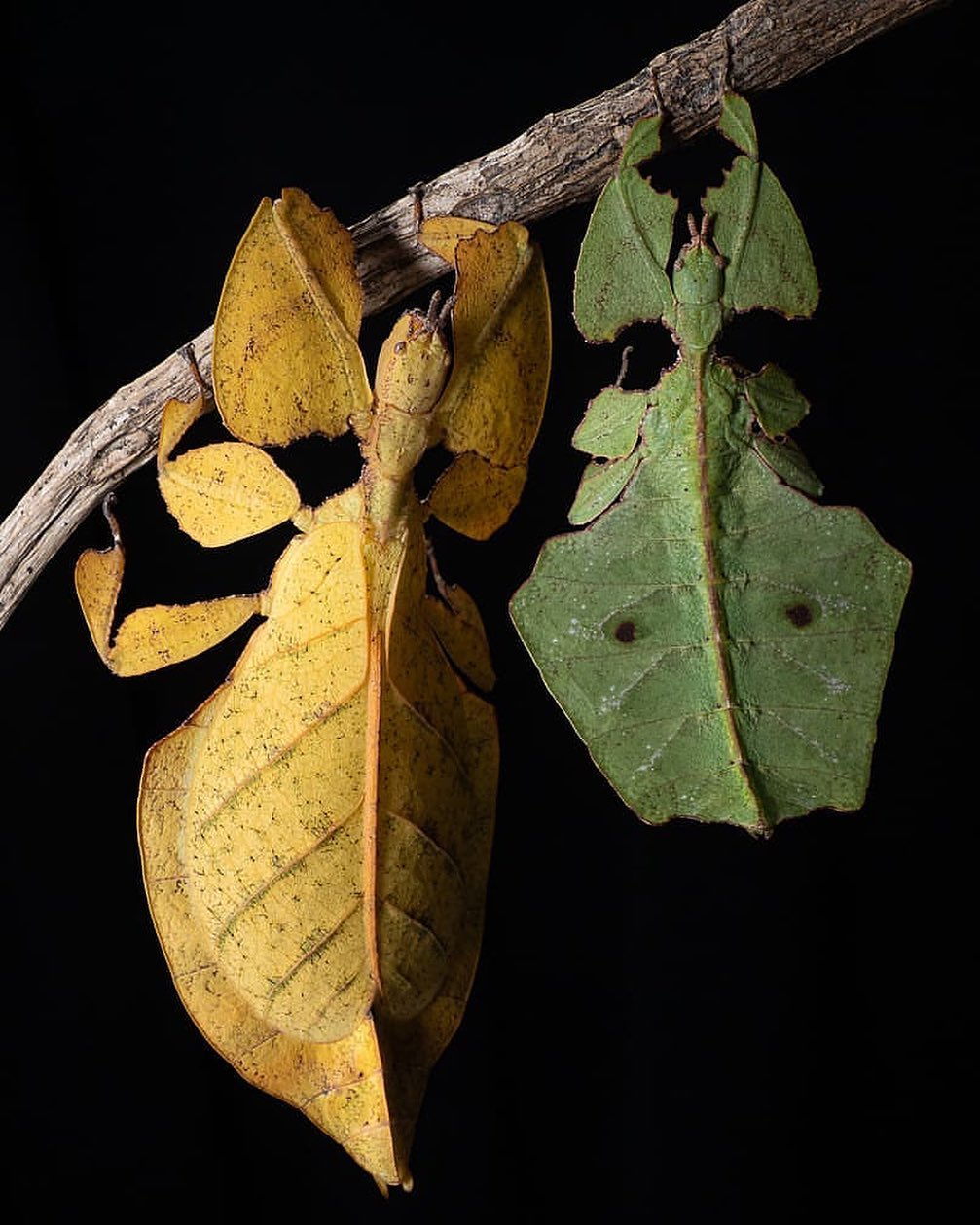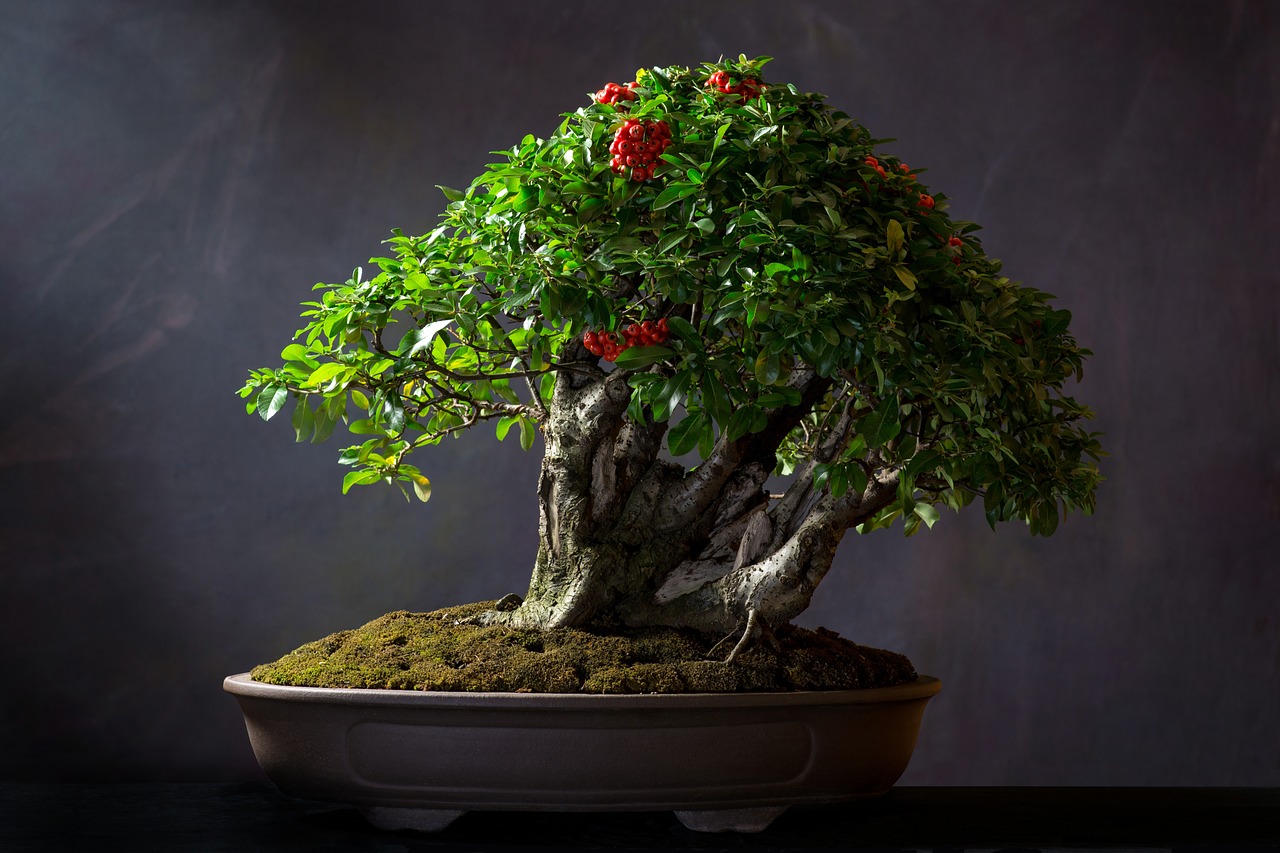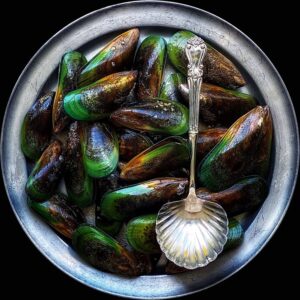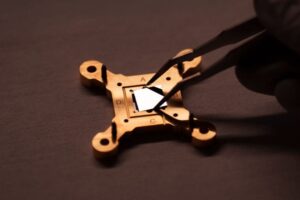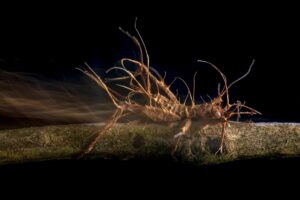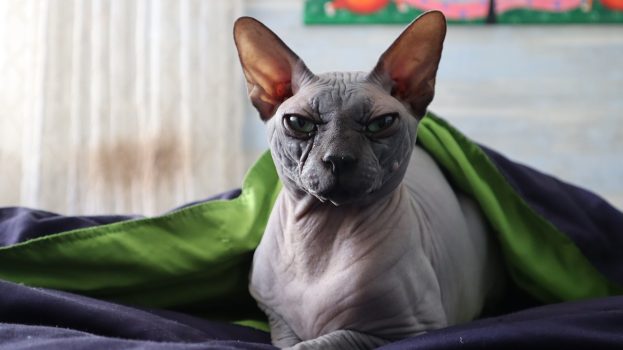 Pin
Pin Image by Ann Erkhim from Pixabay
Cats come in all shapes, sizes, and personalities, but some breeds are so rare that most people have never even heard of them. These felines stand out for their unique traits—whether it’s a naturally curly coat, striking blue eyes, or even a love for swimming. Unlike common breeds like the Persian or Maine Coon, these cats are difficult to find, with some having only a handful of known specimens worldwide.
What makes a cat breed rare? Some originate from isolated regions with limited breeding populations, while others result from spontaneous genetic mutations. Strict breeding standards and slow population growth also contribute to their rarity. Despite their scarcity, each of these cats has a fascinating story, from ancient Egyptian companions to modern-day exotic hybrids.
In this guide, we’ll explore the top 10 rarest species of domestic cat, uncovering their unique characteristics, history, and what makes them so special. If you’re a cat lover looking for something truly extraordinary, these breeds will amaze you!
Table of Contents
1. The Sokoke – The Wild-Looking Forest Cat
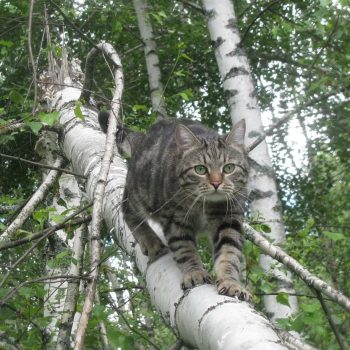 Pin
Pin Photo by barsello_cat
The Sokoke is one of the rarest species of domestic cat, with a stunning wild appearance that makes it look like a small jungle cat. Originally from Kenya, this breed was discovered in the 1970s and has remained extremely rare ever since. Its unique coat pattern resembles tree bark, helping it blend into its natural surroundings. Unlike most cats, the Sokoke has a lean and muscular build, making it an excellent climber and hunter.
Despite its wild look, the Sokoke is known for being affectionate and social. It bonds deeply with its owners and loves interactive play. However, it’s not a lap cat—it prefers to stay active and explore its environment. This breed is also known for its distinctive gait, which resembles the movement of a cheetah.
Because of its rarity, finding a Sokoke is challenging. Most of them are bred in small numbers, mainly in Europe and North America. If you’re lucky enough to own one, you’ll have a cat that stands out from the rest.
2. The Khao Manee – The Diamond-Eyed Cat
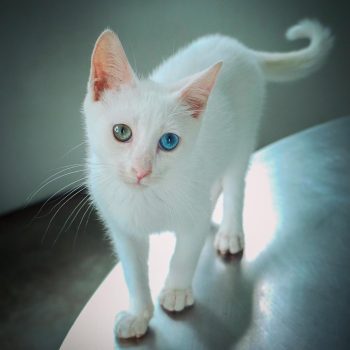 Pin
Pin Photo by formerlyconrad
The Khao Manee is a rare and ancient breed from Thailand, often called the “Diamond-Eyed Cat” due to its striking eyes. Some have deep blue eyes, while others have one blue and one gold, making them look almost mythical. This breed has been around for centuries, once kept only by Thai royalty. It was believed to bring good luck and fortune to those who owned it.
What makes the Khao Manee even more unique is its pure white coat, which contrasts beautifully with its eye colors. Unlike some white cats that suffer from genetic deafness, the Khao Manee is known for being healthy and active. It’s a playful and affectionate breed, always curious about its surroundings.
Since the breed was mostly unknown outside of Thailand for many years, it remains extremely rare. Only in the late 1990s did breeders start introducing it to other parts of the world. Today, owning a Khao Manee is a symbol of exclusivity, as they are still difficult to find.
3. The Serengeti – The Miniature Wildcat
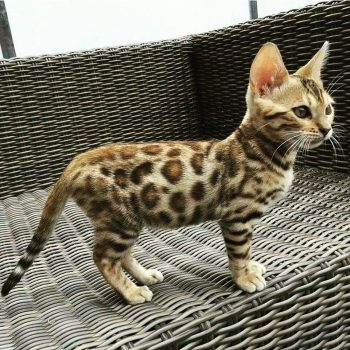 Pin
Pin Photo by nin0_br0wn1717
The Serengeti cat is a rare and exotic-looking breed that was created to resemble a wild African serval—but without any actual wild blood. It was developed in the 1990s by crossing Bengal and Oriental Shorthair cats, resulting in a sleek, spotted feline with long legs and a graceful build. Despite its wild appearance, the Serengeti is a fully domestic cat with a friendly and playful personality.
One of the most striking features of the Serengeti is its tall ears and large, round eyes, which give it an alert and expressive look. Its coat is covered in bold spots, resembling a cheetah or serval, making it one of the most visually stunning domestic cat breeds. It’s an energetic cat that loves to climb, jump, and chase toys, so it needs plenty of space to stay entertained.
Because this breed is still relatively new and selectively bred, it remains rare. Not many breeders specialize in Serengetis, making them hard to find. But for those lucky enough to own one, it’s like having a miniature wildcat right at home.
4. The Peterbald – The Elegant Hairless Cat
 Pin
Pin Photo by lemmyandroswell
The Peterbald is a rare and unusual-looking domestic cat breed from Russia, known for its hairless or nearly hairless body. Developed in the 1990s by crossing a Donskoy with an Oriental Shorthair, the Peterbald has a sleek and graceful appearance, with long limbs, a slender body, and large, bat-like ears. Some Peterbalds are completely bald, while others have a fine peach-fuzz-like coat.
Unlike other hairless breeds, Peterbalds have a gene that can cause different coat variations, meaning some are born with a light, soft coat that may change as they grow older. Despite their delicate appearance, they are incredibly affectionate and people-oriented. They crave attention and love being around humans, often following their owners everywhere like a shadow.
Because of their lack of fur, Peterbalds require special care. Their exposed skin makes them sensitive to cold weather, and they need regular baths to prevent oil buildup on their skin. Due to their rarity and specific breeding requirements, they are one of the hardest domestic cats to find. Owning one is a unique experience, as they are both elegant and full of personality.
5. The American Wirehair – The Unique-Coated Cat
 Pin
Pin Photo Courtesy: Heikki Siltala, CC BY 3.0, via Wikimedia Commons
The American Wirehair is one of the rarest domestic cat breeds, known for its unusual, wiry coat. This breed originated in the United States in the 1960s due to a spontaneous genetic mutation in a litter of farm cats. Unlike any other cat breed, its fur is coarse, crimped, and springy to the touch, giving it a rugged yet charming appearance. Even its whiskers are curled!
Despite its unique coat, the American Wirehair is a low-maintenance cat. Unlike other curly-coated breeds that require special grooming, this breed’s fur is naturally resistant to matting and dirt. It has a strong and muscular build, making it a resilient and hardy pet.
Personality-wise, the American Wirehair is playful and affectionate but not overly clingy. It enjoys interactive play but is also independent enough to entertain itself. Due to its rare genetic trait, this breed is not commonly found outside the U.S., and even within the country, it is hard to come by. Those who own one have a truly one-of-a-kind feline companion.
6. The Turkish Van – The Swimming Cat
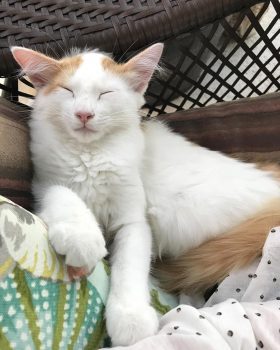 Pin
Pin Photo by andreamfl
The Turkish Van is an ancient and rare breed known for its love of water—something unusual for cats. Originating from the Lake Van region in Turkey, this breed has a unique semi-longhaired coat that is water-resistant, allowing it to swim with ease. Its most recognizable feature is its “Van pattern,” where the body is mostly white with colored markings on the head and tail.
What makes the Turkish Van so fascinating is its playful and adventurous nature. Unlike most domestic cats that avoid water, this breed enjoys playing in sinks, bathtubs, and even swimming pools. It’s highly energetic, intelligent, and known for forming strong bonds with its owners. However, it has an independent streak and doesn’t always enjoy being picked up or cuddled.
Due to its historical isolation in Turkey and selective breeding efforts, the Turkish Van remains rare worldwide. It wasn’t introduced to the U.S. and Europe until the mid-20th century, and even today, finding a purebred Turkish Van is difficult. Those who own one have a truly special cat with a personality unlike any other.
7. The LaPerm – The Curly-Coated Surprise
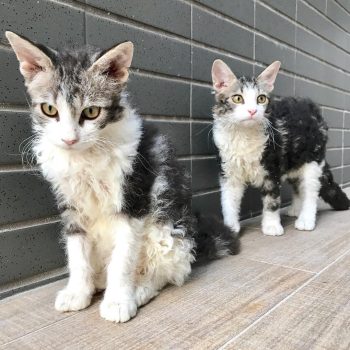 Pin
Pin The LaPerm is a rare domestic cat breed known for its unique curly fur, which gives it a soft, wavy appearance. Unlike other curly-haired breeds, the LaPerm’s coat varies from tight ringlets to loose waves, making every cat look different. This unusual fur texture is the result of a natural genetic mutation that first appeared in the 1980s in an Oregon farm cat.
What makes the LaPerm even more special is that kittens are sometimes born bald or with straight fur, only for their curls to develop later. Their coat is low-shedding and easy to maintain, making them a great choice for people who prefer minimal pet hair around the house.
Beyond their striking appearance, LaPerms are known for their affectionate and social nature. They love being around humans, often climbing onto shoulders or snuggling into laps. Despite their rarity, they adapt well to family life and get along with other pets. Because they are not as widely bred as other cats, finding a LaPerm can be challenging, making them one of the most unique feline companions.
8. The Ojos Azules – The Blue-Eyed Mystery
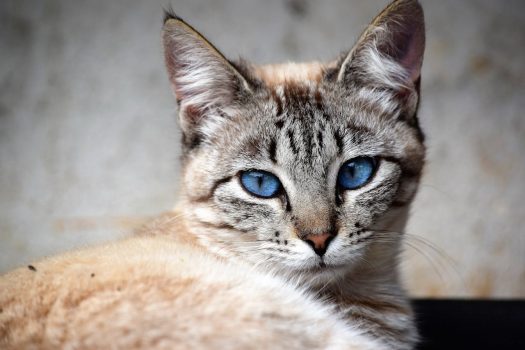 Pin
Pin Photo by Magali Guimarães
The Ojos Azules is one of the rarest domestic cat breeds, known for its stunning deep blue eyes, which are unlike those of any other cat. Unlike Siamese or other blue-eyed breeds, Ojos Azules cats can have any coat color, making their striking eyes stand out even more. The breed was first discovered in the 1980s in New Mexico, where a small group of feral cats displayed this unique eye trait.
One of the most fascinating things about the Ojos Azules is that their blue eyes are not linked to their coat color or associated with deafness, as is common in white cats with blue eyes. This makes them genetically unique. However, because of potential health risks related to the gene that gives them their eye color, breeding efforts have been limited.
Due to their rarity, finding an Ojos Azules cat is nearly impossible today. Only a handful of these cats exist worldwide, and there are no large-scale breeding programs. If you ever come across one, you’re looking at a true feline rarity.
9. The Highlander – The Exotic Bobtailed Beauty
 Pin
Pin Photo by DigitalDirt, CC BY-SA 4.0, via Wikimedia Commons
The Highlander is a rare and exotic-looking domestic cat breed that stands out with its bobbed tail and curled ears. Developed in the early 2000s by crossing the Jungle Curl and Desert Lynx, this breed was designed to have a wild appearance while maintaining a friendly domestic temperament. Its muscular build, strong legs, and expressive eyes give it the look of a miniature wildcat.
One of the most striking features of the Highlander is its short, naturally bobbed tail, which varies in length from just a few inches to almost non-existent. Its ears have a unique curl at the tips, adding to its distinctive look. Despite its rugged appearance, the Highlander is incredibly affectionate, playful, and social. It thrives on human interaction and enjoys being the center of attention.
Because the Highlander is a relatively new breed, it is still rare and not widely recognized by major cat registries. Breeders are few and far between, making it difficult to find one. Those who own a Highlander describe them as intelligent, energetic, and always entertaining—a rare combination in the feline world.
10. The Egyptian Mau – The Fastest Domestic Cat
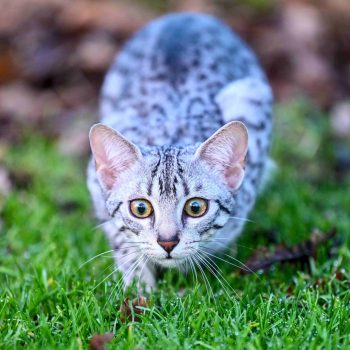 Pin
Pin Photo by fable_the_egyptian_mau
The Egyptian Mau is one of the rarest and most ancient domestic cat breeds, known for its natural spotted coat and incredible speed. Unlike Bengal cats, whose spots were created through selective breeding, the Mau’s markings occur naturally, making it one of the only true spotted domestic cats in the world. With origins tracing back to ancient Egypt, this breed has been depicted in artwork dating back thousands of years.
One of the most fascinating traits of the Egyptian Mau is its unmatched agility. It is the fastest domestic cat, capable of running up to 30 miles per hour. Its long, muscular legs, powerful back, and unique skin flap along the belly allow for an extended stride, giving it exceptional speed and leaping ability.
Despite its athletic nature, the Mau is deeply affectionate and forms strong bonds with its owners. It is known for its musical voice, often chirping and trilling when communicating. Due to strict breeding programs and limited numbers worldwide, finding a purebred Egyptian Mau is difficult, making it a prized rarity among cat lovers.
Facts and Beliefs About the Rarest Species of Domestic Cats
1. The Sokoke – The Wild Survivor
- Fact: The Sokoke is one of the rarest natural cat breeds, with origins tracing back to the coastal forests of Kenya. Unlike most domesticated cats, it has an unusually thin coat adapted to hot climates.
- Belief: Many locals in Kenya believe the Sokoke has mystical abilities and a strong connection to the spirits of the forest. Some think they bring good fortune to their owners.
2. The Khao Manee – The Lucky White Cat
- Fact: Khao Manee cats were once exclusively owned by Thai royalty. Their genetic lineage is well-preserved, and they are still considered symbols of prosperity.
- Belief: In Thailand, the Khao Manee is seen as a bringer of wealth and luck. Some even believe that their different-colored eyes allow them to see into both the spiritual and physical worlds.
3. The Serengeti – The Wild Look-Alike
- Fact: Despite looking like a serval, the Serengeti has no wild DNA. It was bred purely from domestic cats to resemble its larger wild counterpart.
- Belief: Some people mistakenly think the Serengeti is part-wild and expect it to behave like an exotic hybrid, but it is actually affectionate and friendly.
4. The Peterbald – The Elegant Hairless Cat
- Fact: Peterbalds are one of the few cat breeds that can be born with a variety of coat types, from completely hairless to velvety soft. Their coat can even change over time.
- Belief: Due to their lack of fur, some believe Peterbalds are hypoallergenic, but in reality, cat allergies are triggered by skin proteins, not fur.
5. The American Wirehair – The Unique-Coated Wonder
- Fact: The American Wirehair is one of the rarest breeds in the world. Their wiry coat texture comes from a spontaneous mutation and is not found in any other breed.
- Belief: Some believe that the American Wirehair’s coat is rough and unpleasant to touch, but it is actually soft, springy, and easy to care for.
6. The Turkish Van – The Swimming Cat
- Fact: The Turkish Van is one of the only domestic cats known to enjoy swimming. Their water-resistant fur makes them excellent swimmers.
- Belief: Many believe that all white cats with colored tails are Turkish Vans, but only a few meet the breed’s specific traits and standards.
7. The LaPerm – The Curly-Coated Surprise
- Fact: LaPerm kittens can be born bald or with straight fur, but their curls develop as they grow, making each one unique.
- Belief: Some people think LaPerms require frequent grooming, but their coat is surprisingly low-maintenance and doesn’t mat easily.
8. The Ojos Azules – The Blue-Eyed Mystery
- Fact: Ojos Azules cats can have deep blue eyes regardless of their coat color, making them different from most blue-eyed breeds.
- Belief: Some believe all blue-eyed cats are deaf, but Ojos Azules cats do not have the genetic traits linked to deafness in white cats.
9. The Highlander – The Exotic Bobtailed Beauty
- Fact: The Highlander’s unique bobbed tail and curled ears are natural mutations that set them apart from other domestic cats.
- Belief: Because of their wild appearance, some believe Highlanders are aggressive, but they are actually affectionate and playful.
10. The Egyptian Mau – The Fastest Domestic Cat
- Fact: The Egyptian Mau holds the record as the fastest domestic cat, reaching speeds of up to 30 miles per hour.
- Belief: Many think the Egyptian Mau is related to wild cheetahs due to its speed and spots, but it is a fully domestic breed with ancient Egyptian roots.
FAQs
Some domestic cat breeds are rare because of selective breeding, natural genetic mutations, or limited population sizes. Many of these breeds, like the Ojos Azules and Sokoke, originated in isolated regions or from spontaneous genetic changes, making them difficult to breed in large numbers. Others, like the Turkish Van, have strict breed standards, limiting their availability.
Yes, rare cat breeds tend to be more expensive due to their limited availability and specialized breeding requirements. Some breeds, like the Khao Manee or Egyptian Mau, can cost thousands of dollars because of their rarity and historical significance. Additionally, responsible breeders invest in genetic testing and health care, which adds to the cost.
Some rare breeds, like the Peterbald (which is hairless) and the Turkish Van (which loves water), require unique care routines. Hairless cats need regular skin cleaning, and high-energy breeds like the Egyptian Mau need more physical activity. However, most rare breeds have similar basic needs as common domestic cats—proper nutrition, regular vet checkups, and a loving environment.
It depends on the breed. Some rare cats, like the Sokoke, are naturally hardy due to their wild ancestry. Others, like the Ojos Azules, have a small gene pool, which can lead to health concerns if not bred carefully. Ethical breeders prioritize genetic diversity to minimize health risks, but some rare breeds are prone to specific conditions.
It’s possible but extremely rare. Most rare breeds are only available through reputable breeders, as they have small populations and strict breeding programs. However, checking breed-specific rescues or online adoption networks may increase the chances of finding one in need of a home. If you’re open to adopting a mixed breed with similar traits, shelters often have unique cats looking for loving homes.
